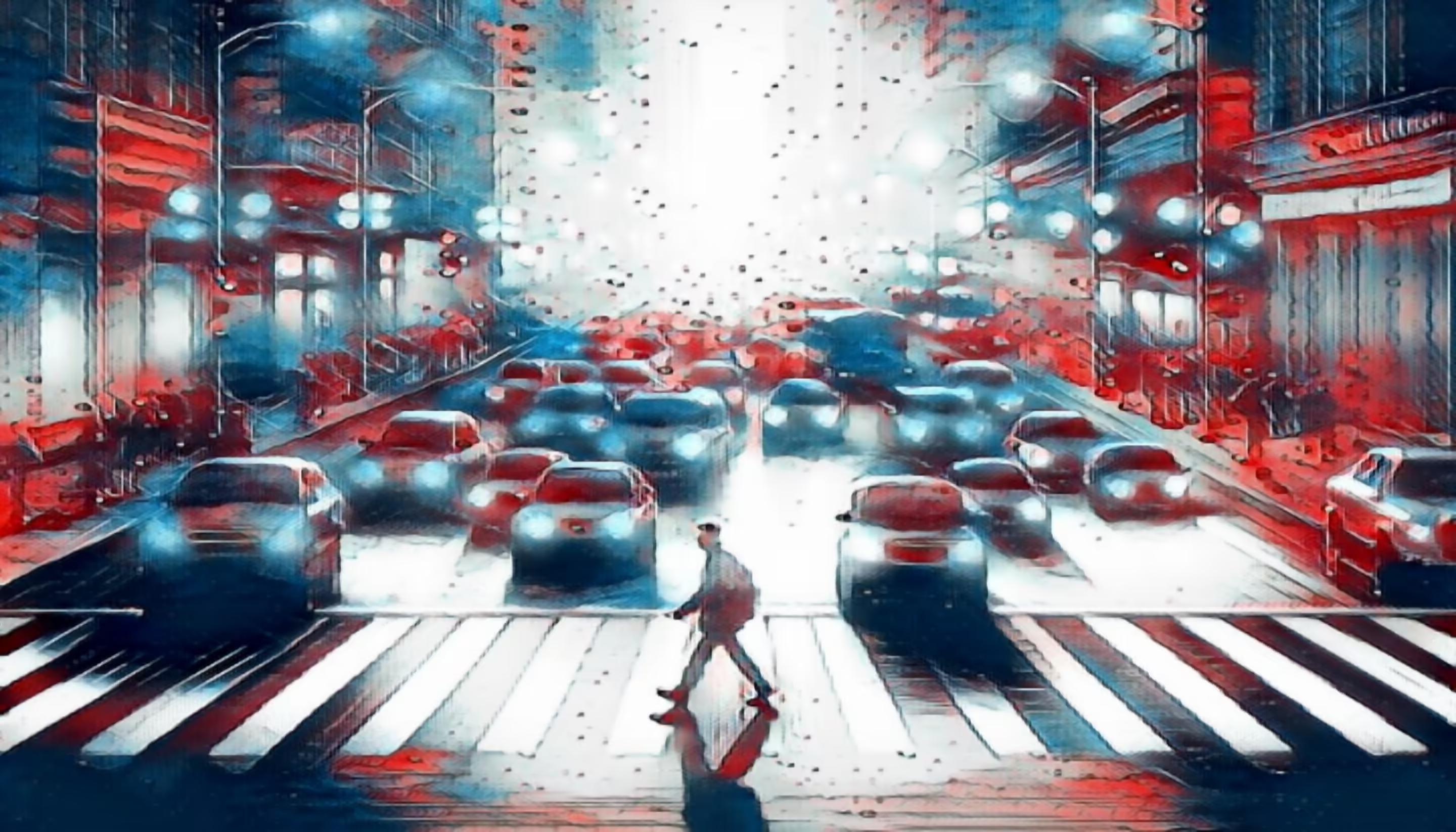Who Is A Pedestrian Under California Law?
In California, a pedestrian is defined as anyone traveling on foot or using non-vehicular transportation in public spaces. This category includes individuals who walk, jog, use roller skates, skateboards, or wheelchairs. It's crucial to understand that this category excludes those using vehicles such as cars, trucks, motorcycles, mopeds, e-scooters, and bicycles. Failure to comply with these laws can lead to penalties such as traffic citations and, more importantly, can contribute to accidents that could have been prevented.
Definition Of Crosswalks In California
In California, a crosswalk is defined as either a marked or unmarked pathway that links sidewalks on opposite sides of a street. Marked crosswalks are usually found at intersections with traffic signals, stop signs, or other traffic control devices and are identified by parallel white or yellow lines painted on the road.
On the other hand, unmarked crosswalks are designated crossing areas at intersections that lack painted lines or signals but still legally permit pedestrian crossing. It's essential to recognize that most intersections in California qualify as crosswalks unless a "no crossing" sign is specifically posted.
For enhanced safety, some crosswalks in California include stop signals, requiring vehicles to halt before a pedestrian crosses, and crossing lights, which indicate when pedestrians are safe to cross and display a countdown timer until the light changes. These are referred to as controlled crosswalks.
Rules Regarding Right-Of-Way At Crosswalks In California
A crosswalk denotes an area of the road designated for pedestrians to safely cross from one side to the other, typically distinguished by white markings (marked crosswalks). In the absence of painted lines, a crosswalk can also be formed where two roads intersect at a right angle (unmarked crosswalks). Generally, pedestrians have the right-of-way at all crosswalks. California Vehicle Code Section 21950 outlines the following regulations concerning crosswalks:
- Drivers must either reduce their speed or come to a complete stop, if necessary, to yield to pedestrians crossing within crosswalks. Drivers must halt their vehicles before reaching the stop line, avoiding stopping in the middle of the crosswalk.
- If a pedestrian is in or about to enter the driver's half of the roadway, the driver must stop to allow them to cross safely.
- Drivers are prohibited from overtaking vehicles that have stopped to permit pedestrians to cross at a crosswalk.
- Even at a crosswalk, a pedestrian should refrain from stepping off the curb if unsafe, such as when a vehicle is approaching rapidly for a reasonable expectation of stopping.
If a driver fails to yield to a pedestrian's right-of-way at a crosswalk and a collision occurs, the driver could be held responsible. All drivers must remain attentive to the road and yield to pedestrians at both marked and unmarked crosswalks in California. However, if a pedestrian enters a crosswalk when unsafe, they may bear some liability for any resulting accidents.
What Are The Exceptions In California's Right-Of-Way Law?
While California mandates that vehicles yield to pedestrians in crosswalks, this does not imply that pedestrians always possess an absolute right-of-way. There are several exceptions to the state's law.
Although pedestrians generally hold the right-of-way at most crossings, they are also accountable for their safety under California law. It is discouraged for pedestrians to dart abruptly into the path of oncoming vehicles from the curb or sidewalk. Instead, they should exercise caution and wait for safe opportunities to cross, particularly when vehicles are approaching. Furthermore, pedestrians should avoid unnecessarily impeding or delaying traffic flow while traversing a crosswalk.
California has additional statutes prohibiting pedestrians from straying outside designated crosswalks at intersections or walking within bike lanes.
In January 2023, California introduced the Freedom To Walk Act, granting pedestrians the liberty to cross roadways without a marked crosswalk if deemed safe. Previously, such crossings were prohibited. Despite this legislative change, pedestrians must remain vigilant when approaching vehicles and other potential hazards.
What Happens When The Pedestrian Is Responsible For The Accident?
If a pedestrian unlawfully crosses a roadway and collides with a vehicle, they may bear responsibility for the accident and could be held financially accountable. Consequently, the pedestrian might have to reimburse the driver for any losses incurred, even if the pedestrian sustained more severe injuries.
Typically, pedestrian accidents involve shared fault, wherein principles of comparative negligence come into play. In such instances, accountability for the accident is allocated, and compensation is awarded based on the degree of fault. In states like California that follow pure comparative negligence laws, the plaintiff's compensation is reduced by the percentage of fault they contributed to the accident.
What Compensation Can A Pedestrian Receive?
Injured pedestrians have the option to pursue compensation for various damages, such as:
- Medical bills
- Lost wages and reduced earning capacity
- Property damage
- Permanent injuries and disabilities
- Past and future pain and suffering
- Loss of companionship
- Emotional distress
In cases where a loved one has lost their life in a pedestrian accident, surviving family members may consider filing a wrongful death lawsuit against the responsible driver. This legal action can seek compensation for expenses like medical bills, funeral costs, lost future income, pain and suffering, and loss of affection, care, and companionship.
Contact An Experienced Accident Attorney Today
Pedestrian accidents can happen in different places, including shopping centers, parking lots, and driveways, emphasizing the need for drivers to remain vigilant and aware of their surroundings.
In the event of sustaining severe injuries in a pedestrian accident involving a vehicle, it is crucial to take immediate action and reach out to a seasoned personal injury attorney promptly. By doing so, you are taking control of your situation and ensuring that your rights are protected. An attorney can assist in pursuing justice and exploring all available compensation avenues. Contact us as soon as possible to discuss the specifics of your case.
